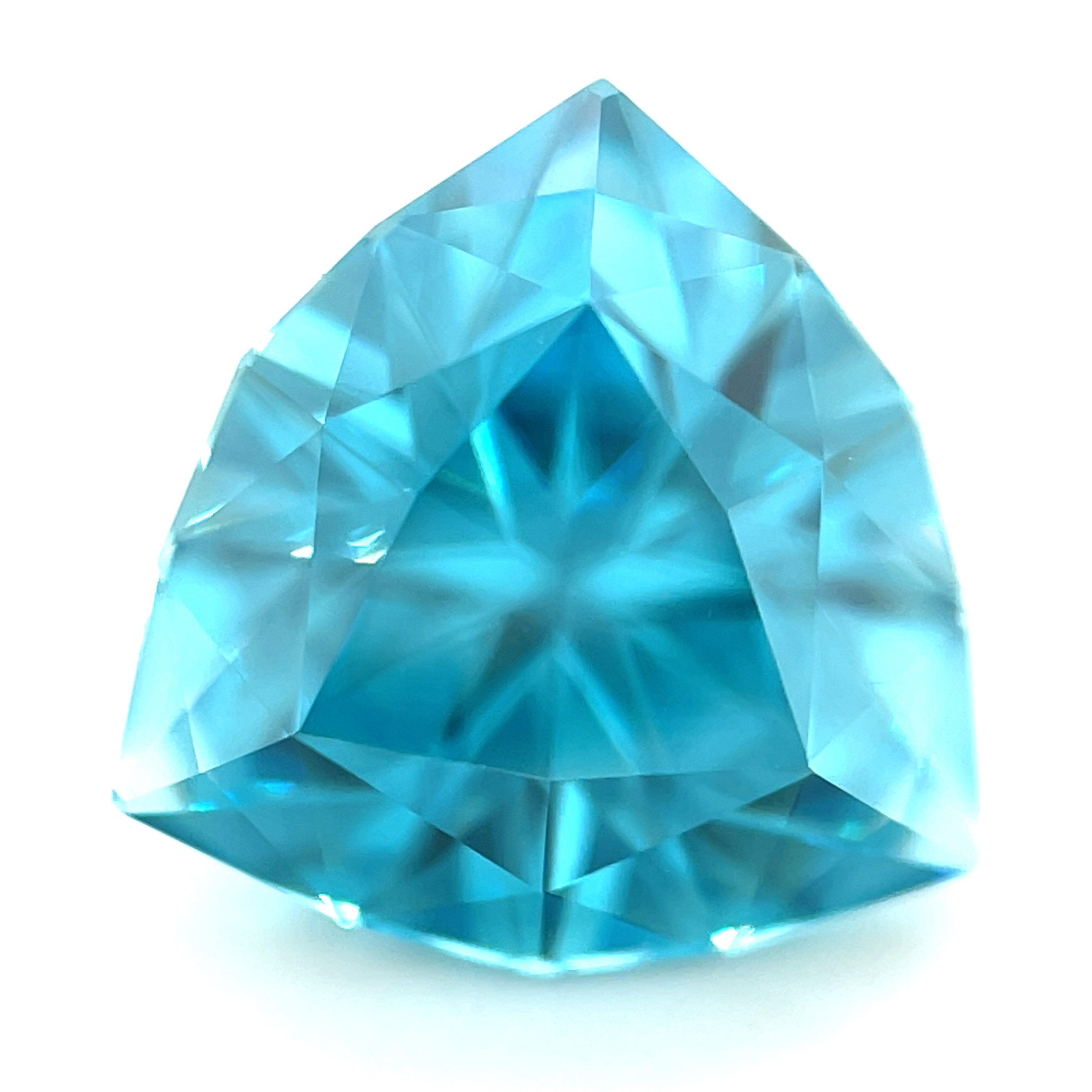


Faceted Zircon - 5.22 CTW
Tax excluded. Shipping calculated at checkout
- Variety - Zircon
- Clarity - Eye Clean, type 2
- Dimensions - 9.75 x 9.67 x 6.77 mm
- Weight - 5.22 CTW
- Colour - Strong Blue (WOC 2.5B 4/10)
- Cut - Excellent
- Shape - Triangle
- Treatment - Heated
- Origin - Cambodia
- Comments - Inclusions appear to be of natural origin
- Valuation Certificate from Australia - Yes
More Information about Zircon
Zircon is a mineral species that can be broadly defined as a zirconium silicate.
These highly dispersive stones have long been used as diamond substitutes. That's why the name zircon has the connotation of synthetic or imitation. It was used to imitate a diamond, but the stone is indeed naturally occurring. It should not be confused with the synthetic cubic zirconium (zirconia) or "CZ", which is laboratory created as zirconium oxide and is in no way related to naturally occurring zircon
| Name | Zircon |
| Varieties | Hyacinth, Starlite |
| Refractive Index | Varies by amount of radioactive damage to its crystal structure. Low (most damaged): 1.78 - 1.85; Intermediate: 1.85 - 1.93; High (least damaged): 1.92 - 2.01 |
| Colors | Reddish brown, yellow, gray, green, red; various other colors induced by heating |
| Hardness | 6 (Low), 7.5 (High) |
| Wearability | Good |
| Enhancements | Virtually all blue zircon is heat treated |
| Typical Treatments | Heat Treatment |
| Etymology | From the Arabic zargun, from the Persian zar for “gold” plus gun for “color.” The name is ancient |
Enhancements
Zircon is routinely heat treated. This heat treatment has two effects on the gem:
- It alters the color to colorless, blue or golden (the most preferred colors for zircon) and orange to red colors.
- The crystal lattice of metamict zircons is restored to high type zircon
Heat treatments are carried out in either a oxidizing or a reducing atmosphere (or a sequential combination).
- Orangy-brown to reddish-brown zircons ("hyacinth") are heated at around 900° C in an oxidizing atmosphere which turns them yellow to red.
- Or when these brownish zircons are heated at around 1000-1400° C in a reducing environment, it turns them into colorless or blue. Some off-colors are the result of this process as well.
- These off-colored stones, from the reducing treatment, are then reheated to around 900° C in oxidizing conditions and this results in colorless, yellow, orange or red colors
Although colorless, blue and red zircon does exist in nature, they are very rare and there is no known means available to distinguish between them and their heated counterparts.
Sources
Zircon is found all over the world, but gem-quality crystals are rare. Sri Lanka and Southeast Asia are the primary sources of gem-quality zircons.
Care
Zircons should be worn carefully to prevent damage. As ring stones, they should have protective settings. Otherwise, reserve zircon jewelry for occasional wear only. To learn more about choosing zircons and other delicate gems for engagement ring stones, consult this article.
Poorly cut zircons may benefit from expert custom recutting. Take a look at the before-and-after photos of zircons in this article on gem recutting and repair.
Although most zircons are safe to wear, some may have mild levels of natural radioactivity, especially the low or metamict variety. Gem cutters should check the radioactivity of zircons before working on them.
Due to their brittleness, zircons should never be cleaned with mechanical systems, such as ultrasonic cleaners. Instead, use warm water, mild detergent, and a soft brush.
Choose options



Tax excluded. Shipping calculated at checkout


